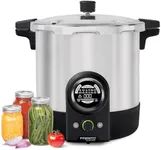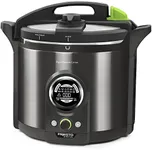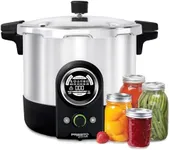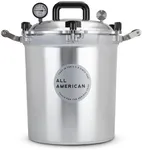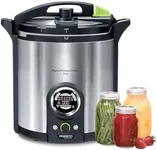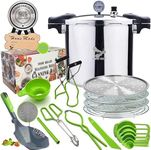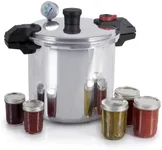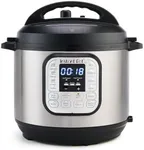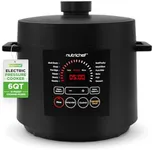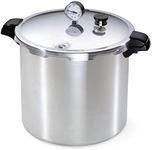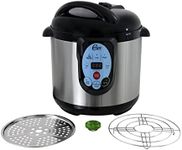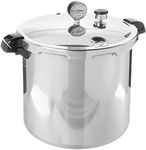Buying Guide for the Best Electric Pressure Canners
Choosing the right electric pressure canner is all about understanding your own needs and the way you plan to use it. Whether you want to preserve fruits and vegetables, make jams, or prepare your meals in advance, the right machine can make the process safe, efficient, and enjoyable. Think about the kinds of foods you want to can, how much you typically process at once, and how much space you have in your kitchen. By focusing on a few essential specifications, you can be confident you'll pick a canner that's a great fit for your lifestyle.Capacity (Quart Size)Capacity refers to the amount of food or jars the canner can hold at one time, usually measured in quarts. This is important because it determines how much you can process in a single batch. Small canners (around 4-6 quarts) are perfect for individuals or small households who process just a few jars at a time. Medium canners (8-12 quarts) work well for average-sized families, allowing you to can enough at once without taking up too much space. Large canners (16 quarts or more) are suited for people who want to can in bulk or have large harvests. When deciding on capacity, consider your storage needs and the typical batch size you want to process, bearing in mind that larger canners also take up more storage and counter space.
Pressure SettingsPressure settings refer to the range and adjustability of the pressure inside the canner, typically measured in pounds per square inch (PSI). The importance of this feature lies in the variety of foods that require different pressures to ensure safety and quality. Some canners offer preset pressure options, while others allow for manual adjustments within a common range, such as 10, 11, or 15 PSI. For general preservation of most foods, a standard 10 or 15 PSI is adequate, but if you want to can a range of items (especially meats or low-acid vegetables), having adjustable pressure gives you more flexibility. Think about the foods you plan to preserve and check whether the canner offers the pressure settings suitable for your recipes.
Safety FeaturesSafety features are mechanisms built into the canner to protect users from common mishaps such as overpressure or improper sealing. Valves, locking lids, and automatic shut-offs are some common examples. These features are crucial because canning involves high heat and pressure; improper handling can be dangerous. Some canners offer basic safety controls, while others provide more advanced feedback and fail-safes. If you’re a beginner or want extra peace of mind, prioritize models with comprehensive safety features. More experienced users might be comfortable with simpler systems, but safety should always be a primary consideration.
Programmability and ControlsProgrammability and controls refer to how you operate and set the canner, such as digital displays, timers, pre-set programs, or manual controls. These features make the process more user-friendly and can ensure more consistent results. If you prefer a 'set-it-and-forget-it' approach or are new to canning, look for canners with clear digital displays, straightforward pre-programmed options, and audible alerts. If you like more control or want to experiment with settings, a model with manual adjustment options could suit you better. Your comfort with technology and hands-on involvement should guide your choice here.
Size and StorageSize and storage refers to the physical footprint of the canner and how easily it can be stored when not in use. This factor is important because kitchens often have limited counter and cabinet space. Compact models are easier to store and handle, making them suitable for smaller kitchens or occasional canners. Larger models can process more at once but may require a dedicated storage spot. Before choosing, think about where you’ll use the canner and whether you have enough space to keep it safely when it’s not needed.
Ease of CleaningEase of cleaning covers how simple it is to wash and maintain the canner after use. Some canners feature non-stick interiors, removable parts, or dishwasher-safe components, all of which make cleaning much easier. This is important because thorough cleaning prevents build-up and ensures the canner functions safely over time. If you plan to can frequently or dislike spending time on cleanup, seek models designed with easy disassembly and cleaning in mind.
